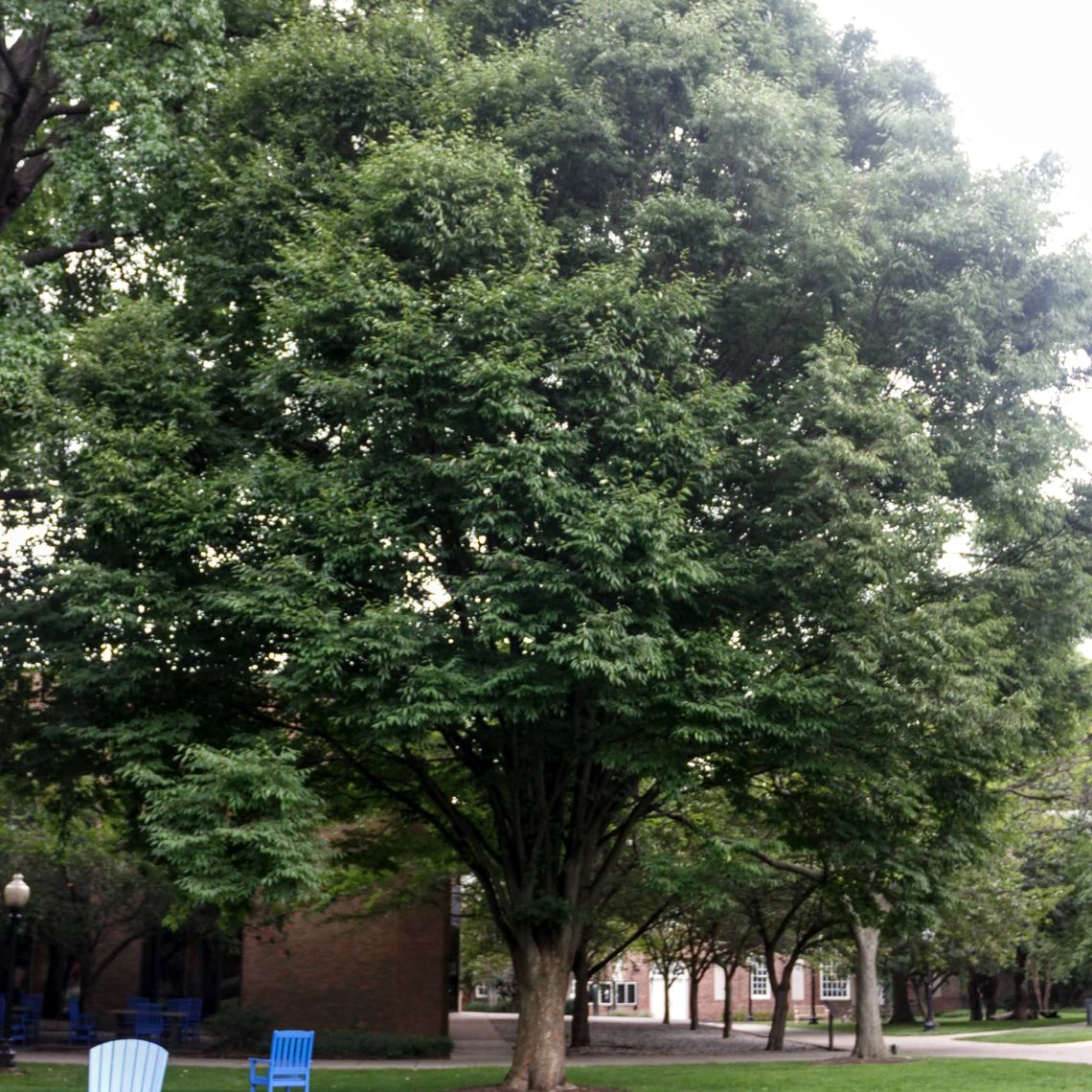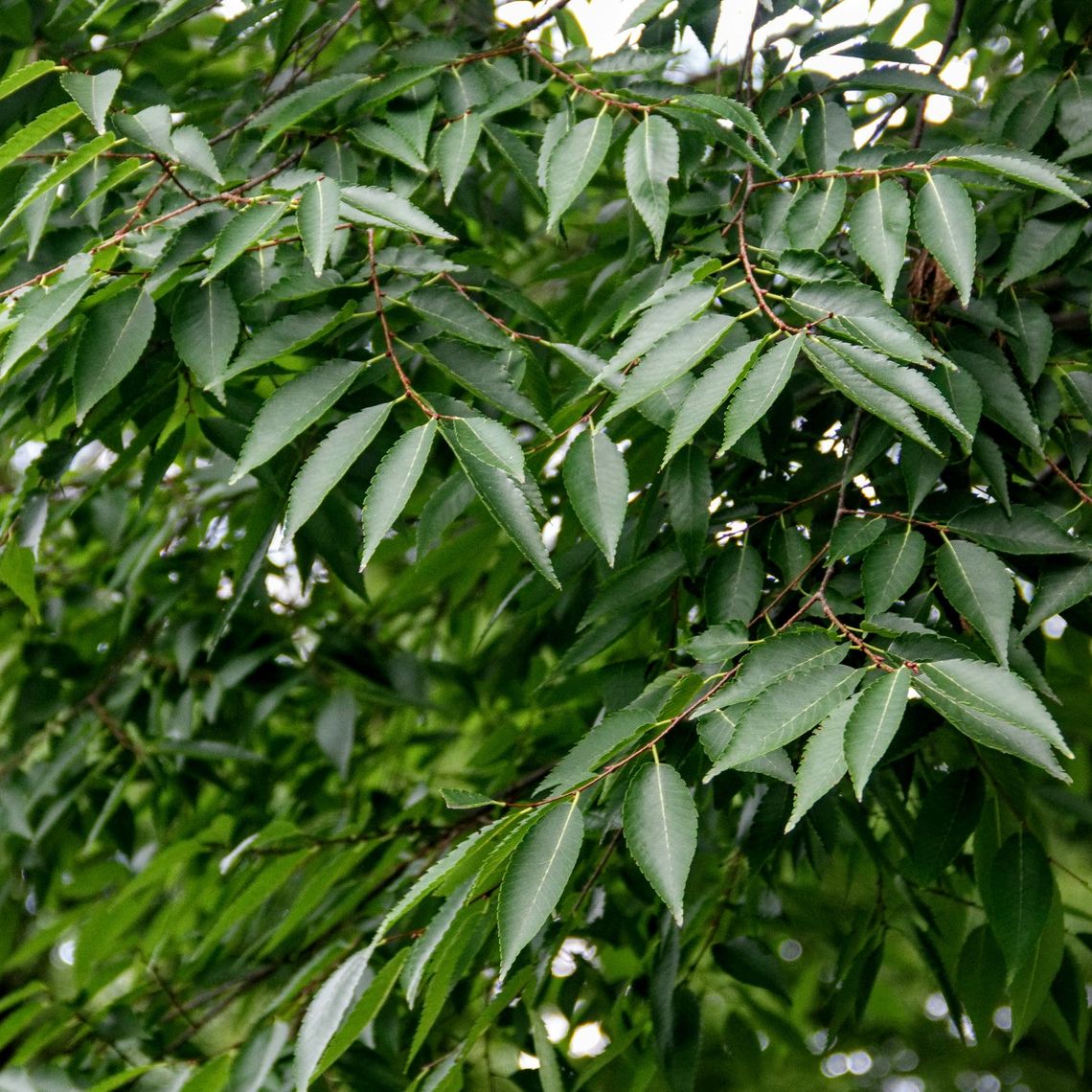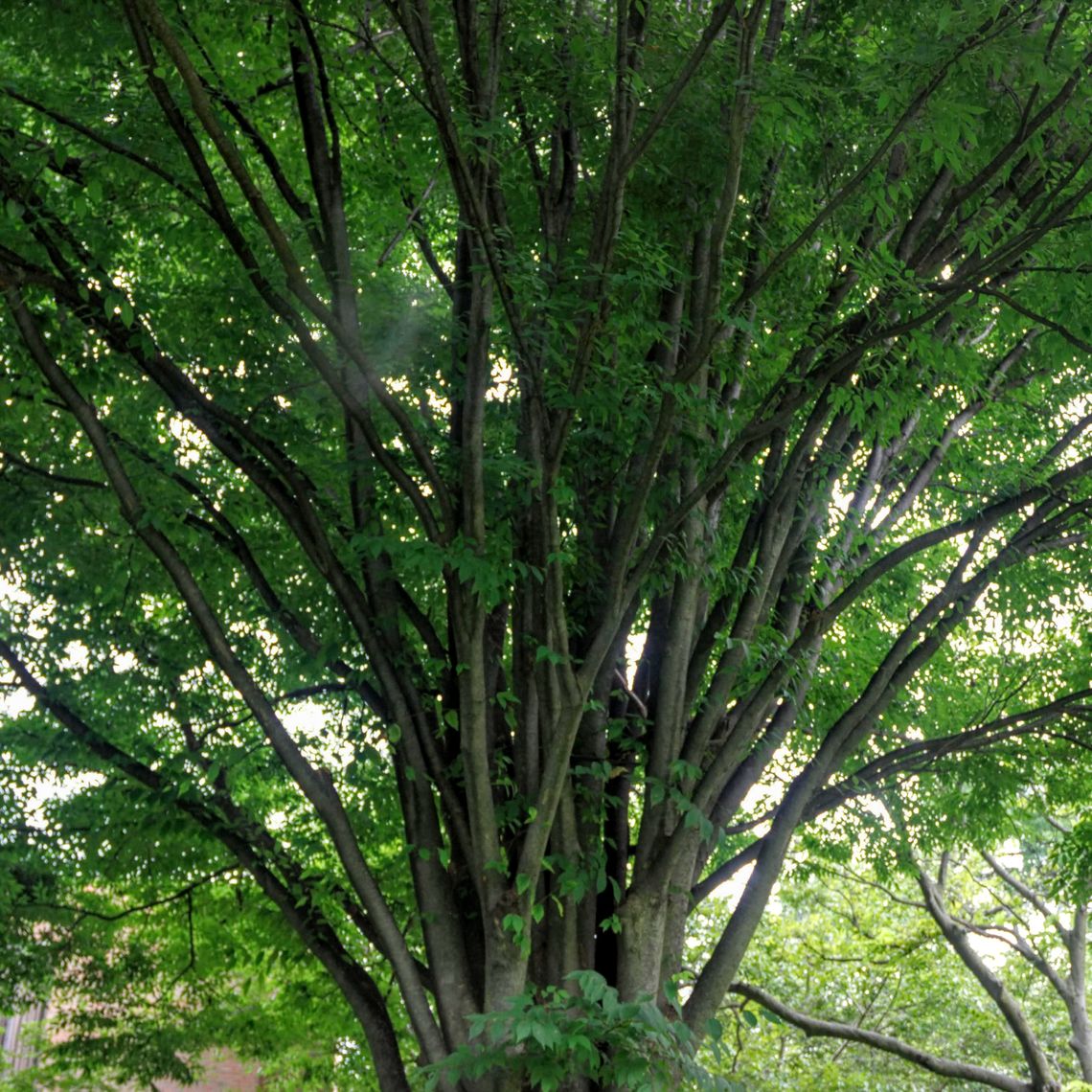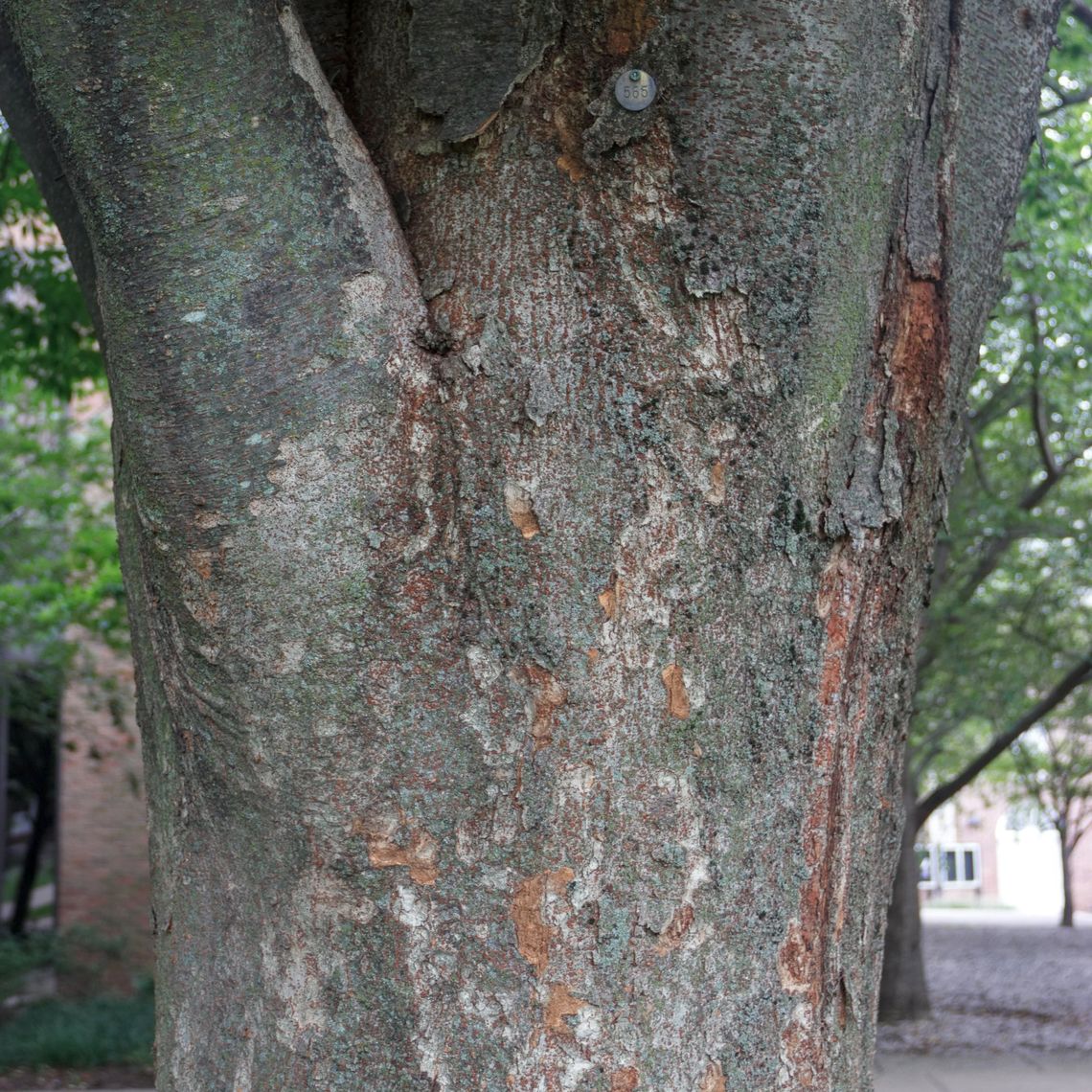Japanese Zelkova (Zelkova serrata)
The Japanese zelkova is a medium-sized tree, and has started to become a popular substitute for elm trees since it is resistant to Dutch elm disease. This tree is noted for its graceful vase shape, its pointed-oval and sharply serrated leaves, and its shiny bark, which exfoliates with age. This is an important commercial timber tree in Japan.
Family: Ulmaceae (Elm)
Characteristics: The 2-inch to 5-inch-long leaves have an oval-pointed shape and are sharply toothed and dark green. In the fall, leaves turn yellow to red-purple. This tree produces insignificant small green flowers in the spring which give way to small, green fruits in the fall. When young, its bark is brown and shiny, similar to that of a cherry tree. With age, its bark becomes gray and begins to exfoliate. This tree is vase-shaped with branches that stick out at a 45 degree angle. It grows 50-80 feet high and wide.
Foliage: Deciduous (leaves lost seasonally)
Geographic Origin: Russia, China, Japan, Korea, Taiwan (non-native)
Cultivation Notes: Requires low maintenance. Does best in full sun. Prefers acidic, moist, and well-drained soils. This tree is resistant to Dutch elm disease and the elm leaf beetle.
Number on Campus: 37
Sources: Dirr, Morton Arboretum, Missouri Botanical Garden




